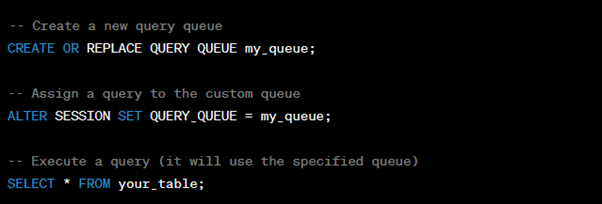Observing and managing queries in Snowflake is crucial for monitoring query performance, troubleshooting issues, and optimizing your data warehouse. Snowflake provides various tools and features to help you observe and manage queries effectively. Here are some key methods, along with relevant codes and examples:
1. Query History and Profile
You can retrieve historical information and detailed profiles of executed queries using Snowflake’s `QUERY_HISTORY` function. This allows you to monitor query execution and gather insights into query performance.
Example

This query retrieves information about the last 10 executed queries, including their start time, end time, status, and more.
2. Query Tags
Query tags allow you to annotate queries with metadata that can help you track and categorize queries. You can set query tags at runtime to provide additional context for your queries.
Example

In this example, the query is tagged with “Monthly Report,” making it easier to identify the purpose of the query in query history.
3. Query Queues
Snowflake allows you to create and manage query queues to control resource allocation and prioritize specific queries or workloads. You can assign queries to different queues based on their importance and resource requirements.
Example

This example demonstrates how to create a custom query queue and assign a query to it, ensuring that it receives the allocated resources and priority.
4. Query Cancellation
You can manually cancel queries that are running longer than expected or consuming excessive resources. This can help prevent resource contention and improve overall query performance.
Example

Replace `<query_id>` with the actual ID of the query you want to cancel. You can find query IDs in the query history.
5. Query Optimization
Snowflake provides tools like the Query Profile and Query Execution Plan to analyze and optimize query performance. You can use these tools to identify bottlenecks and inefficiencies in your queries.
Example

This query retrieves the execution plan for a specific query, allowing you to analyze how the query is being executed and identify areas for optimization.
By using these methods and tools, you can effectively observe, manage, and optimize queries in Snowflake, ensuring efficient query execution and better overall performance of your data warehouse.
